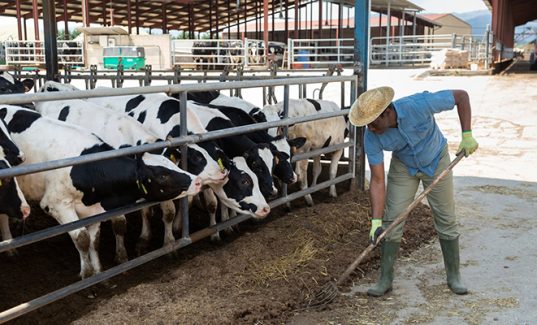Two important updates will be implemented in the crossbred evaluations in December 2019:
Change in F1’s threshold for the breed of evaluation to be the breed of the ID: Since the introduction of crossbred evaluations in April 2019, Breed Base Representation (BBR) is instrumental in determining the breed of evaluation of all animals. Until now, for F1 animals, the breed code of the animal ID determined the breed of evaluation even if the BBR value is only the second highest value if the 2 highest BBR breeds are in the range of 45-55% and the second breed is less than 10% from the first breed.
Effective with the December 2019 evaluation, the simplified rule will maintain the breed of the ID if its BBR is higher than 40%. In that case an animal with HO ID, will maintain the HO breed of evaluation if its HO BBR is higher than 40%. This change currently impacts less than 500 animals in the evaluation.
Change in calculation of reliabilities for crossbred animals: The calculations of reliability (REL) and the inbreeding of future progeny (EFI) rely on the relationship between the animal and the predictor population. Since crossbred animals do not have a predictor population for PTA (purebred SNP effects are blended in based on BBR values), their reliability and EFI estimates have previously been obtained using a multi-breed reference population. This strategy results in nearly 30% lower reliabilities for animals with BBR<90 compared to animals with BBR>90. A further concern was that crossbred animals with stronger links to the reference population (e.g. BBR close to the 90 threshold) receive similar reliabilities than animals having a mixed-breed genetic makeup (e.g. F1’s, or animals with contributions from more than 2 breeds).
Effective December 2019, following a full review of the methodology and results, the most connected purebred reference population of each crossbred animal (determined by the breed of evaluation used) will be used instead. In addition, a differential weighting of the traditional and genomic components will be applied, by giving more weight on the traditional component for animals with traditional reliability above 30% (animals with phenotypes). These changes make it even more important to emphasize that genomic evaluations on crossbred animals are useful for animals being bred to animals of the same breed of evaluation (e.g. going towards “purity”), whereas are not an advisable tool for animals in a rotational crossbreeding program.
As expected, no effect will be observed on purebred animals, whereas reliabilities and PTAs of crossbred animals will be impacted. (Note that reliabilities are used to weight the traditional and genomic components of an evaluation.) The greatest changes will be observed on animals with BBR close to the 90% threshold, as their reliabilities will be the ones mostly changing (upwards) with this new strategy. Reliabilities will be more closely linked to the BBR distribution, as animals having more purebred composition will receive a reliability and PTA estimates similar (with differences in weighting, obviously) to a purebred animal. Considering that animals with BBR close to the 90% threshold have most of their SNP effects based on that same breed on which relationships are obtained from, this change makes reliability estimates more accurate.
Provided by the Council on Dairy Cattle Breeding




